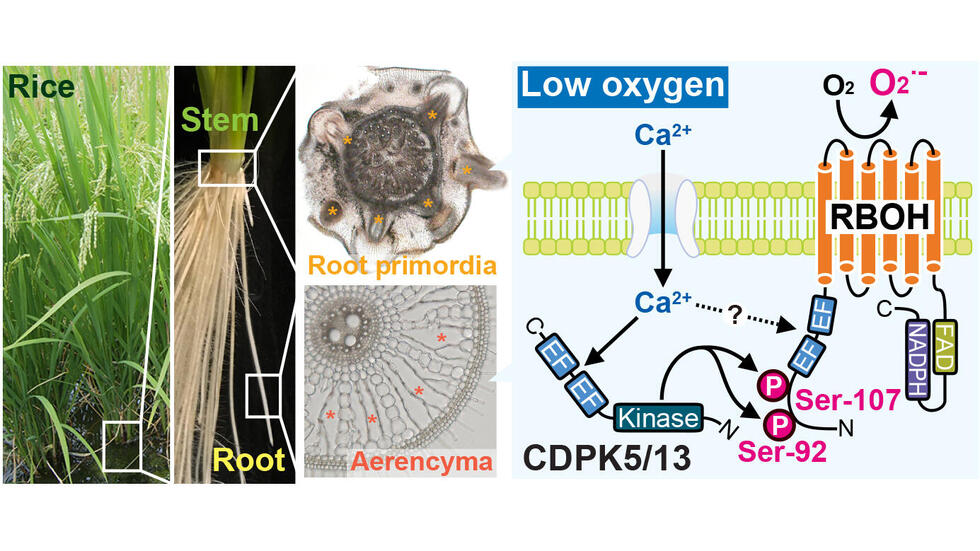A research team from Nagoya University has uncovered a new mechanism for root formation in rice, potentially paving the way for breeding moisture-resistant cereal crops. The findings were published in Plant Physiology in June 2024.

Rice Roots’ Adaptive Power Opens New Breeding Possibilities
As extreme weather leads to increased flooding damage, understanding the mechanism behind rice root formation in paddies becomes crucial. The Nagoya University research group discovered that calcium-dependent reactive oxygen species act as signals to form aerenchyma, which are air-filled spaces that help rice adapt to low-oxygen soils.
These structures facilitate efficient oxygen supply within the plant, enabling growth in waterlogged conditions. The study revealed that calcium-dependent protein kinases (CDPK) activate the production of reactive oxygen species, controlling the formation of aerenchyma in adventitious roots.
This breakthrough suggests new breeding techniques to enhance moisture resistance in crops like wheat and maize. The research marks a significant step in breeding moisture-resistant plants, promoting sustainable agricultural practices.
